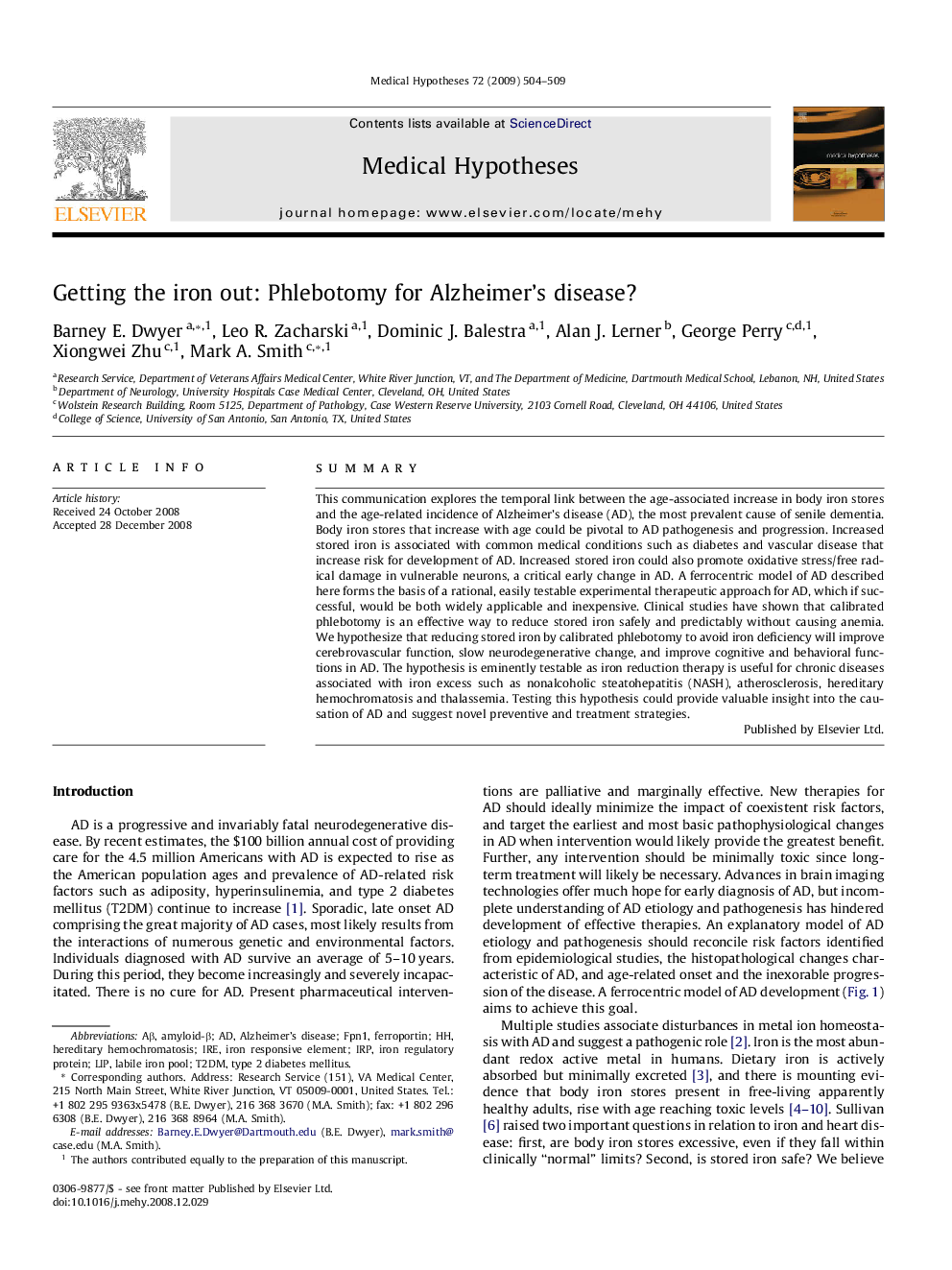| Article ID | Journal | Published Year | Pages | File Type |
|---|---|---|---|---|
| 2490764 | Medical Hypotheses | 2009 | 6 Pages |
SummaryThis communication explores the temporal link between the age-associated increase in body iron stores and the age-related incidence of Alzheimer’s disease (AD), the most prevalent cause of senile dementia. Body iron stores that increase with age could be pivotal to AD pathogenesis and progression. Increased stored iron is associated with common medical conditions such as diabetes and vascular disease that increase risk for development of AD. Increased stored iron could also promote oxidative stress/free radical damage in vulnerable neurons, a critical early change in AD. A ferrocentric model of AD described here forms the basis of a rational, easily testable experimental therapeutic approach for AD, which if successful, would be both widely applicable and inexpensive. Clinical studies have shown that calibrated phlebotomy is an effective way to reduce stored iron safely and predictably without causing anemia. We hypothesize that reducing stored iron by calibrated phlebotomy to avoid iron deficiency will improve cerebrovascular function, slow neurodegenerative change, and improve cognitive and behavioral functions in AD. The hypothesis is eminently testable as iron reduction therapy is useful for chronic diseases associated with iron excess such as nonalcoholic steatohepatitis (NASH), atherosclerosis, hereditary hemochromatosis and thalassemia. Testing this hypothesis could provide valuable insight into the causation of AD and suggest novel preventive and treatment strategies.
